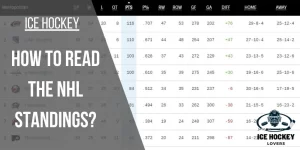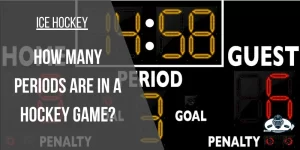Hockey Delay of Game: The NHL’s Delay of Game Penalties!
Imagine a thrilling hockey match where the players glide across the ice with astonishing speed, displaying their exceptional skills and strategic prowess. Hockey, often called “the fastest game on Earth,” captivates fans worldwide with its lightning-fast plays and bone-jarring collisions. Yet, amidst the adrenaline-fueled chaos of this beloved sport, there exists a rule known as the “Hockey Delay of Game.” This fascinating regulation adds an intriguing layer to the game, challenging players’ decision-making abilities and testing their discipline under pressure.
This article will delve into the intricacies of the NHL rule surrounding this penalty, providing a detailed understanding of its nuances. By the end of this guide, you will have a clear comprehension of what constitutes a delay of game penalty, its implications, and how to avoid it. Let’s get started!
Table of Contents
What is a Delay of Game Penalty?
A delay of game penalty in hockey occurs when a player intentionally or unintentionally delays the game, disrupting its flow. The NHL rule book defines specific scenarios that can lead to this penalty. Players, coaches, and fans must know these rules to ensure fair play and avoid unnecessary penalties.
Understanding the NHL Rule
According to the Official NHL Rule (Rule 63), a player, goalie, or team can be penalized if the referee believes they are intentionally delaying the game in any way.
The NHL rule book states that a player will be assessed a delay of game penalty under the following circumstances:
Shooting the Puck Out of Play
If a defending player deliberately shoots the puck out of the playing area, resulting in a stoppage of play, the opposing team will receive a delay of game penalty. This rule discourages players from halting the game’s progress by intentionally shooting the puck out of bounds.
Face-off Violations
When a player violates the rules surrounding face-offs, such as not taking the correct position or encroaching the designated area, they may receive a delay of game penalty. The NHL emphasizes the importance of fair and controlled face-offs to maintain the integrity of the game.
Intentional Dislodging of the Net
If a player intentionally dislodges the net from its moorings, causing a stoppage in play, they can be assessed a delay of game penalty. This rule ensures players do not engage in unsportsmanlike conduct by deliberately disrupting the game’s momentum.
Refusing to Start Play
In certain situations, a player may refuse to start play when instructed by the referee. This can include refusing to take a face-off, delaying a line change, or other similar actions. Such refusal can result in a delay of game penalty.
Implications of a Delay of Game Penalty
When a delay of game penalty is called, the offending player must serve time in the penalty box, leaving their team shorthanded. The opposing team then has the advantage of a power play, increasing their chances of scoring a goal. Additionally, the penalized player’s team is often forced to defend against the opposing team’s offensive strategies, putting them at a disadvantage.
Strategies to Avoid Delay of Game Penalties
Players should familiarize themselves with the NHL rules and regulations to prevent incurring delays in-game penalties. Here are some essential strategies to follow:
- Practice Precision: Develop accuracy and control when shooting the puck, minimizing the chances of unintentionally shooting it out of play.
- Stay Disciplined: Adhere to the rules and regulations surrounding face-offs, ensuring you are in the correct position and following the referee’s instructions precisely.
- Respect the Game: Avoid engaging in unsportsmanlike conduct, such as intentionally dislodging the net or refusing to start play when instructed to do so.
- Communication: Maintain open lines of communication with teammates to ensure everyone is on the same page and aware of the game’s dynamics.
Conclusion
In conclusion, the Delay of Game penalty is a deterrent against actions that can disrupt the pace and fairness of ice hockey games. By understanding the situations that result in this penalty and implementing effective strategies to avoid it, players and teams can maintain a competitive edge while adhering to the rules. We hope this

Who is Austin Taylor?
Meet Austin Taylor, your go-to source for everything ice hockey! With a passion for the sport that’s as deep as the ice itself, Austin Taylor brings you concise, expert insights and nitty-gritty details on all things hockey. From gear reviews to strategy breakdowns, Austin Taylor is your trusted guide to navigating the exhilarating world of ice hockey. Get ready to lace up your skates and dive into the game with Austin Taylor as your ultimate companion.



